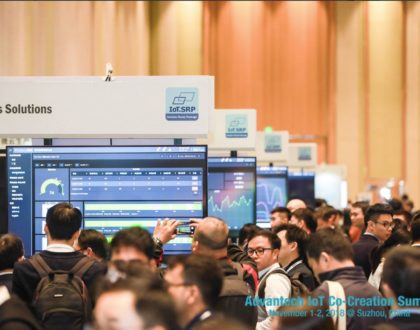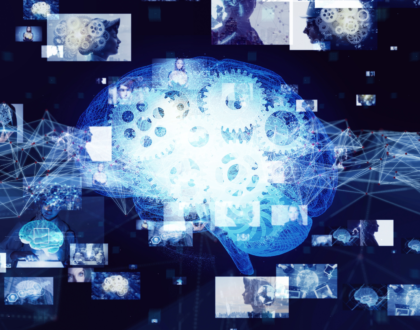An IoT-connected journey—the biggest mistake is not getting started
by Mike Fahrion
 It’s been a busy spring here in the Midwest. Winter slipped out quietly, but spring came with a vengeance with a local pre-season tornado—very near to my own front yard. With many still cleaning up in its wake, the trees have been busy sprouting leaves and I’ve been busy wreaking havoc on the travel budget. This week’s hastily booked trip had me walking down the aisle of several flights wondering if I’d run out of plane before reaching the lofty number on my ticket.
It’s been a busy spring here in the Midwest. Winter slipped out quietly, but spring came with a vengeance with a local pre-season tornado—very near to my own front yard. With many still cleaning up in its wake, the trees have been busy sprouting leaves and I’ve been busy wreaking havoc on the travel budget. This week’s hastily booked trip had me walking down the aisle of several flights wondering if I’d run out of plane before reaching the lofty number on my ticket.
Traveling is an important part of the job—it gets me away from the din of the day-to-day and gives me more degrees of freedom in which to think. Toss in a few customer visits, add an industry event, then stir in the cultural mix of a few other countries and you’ve got the recipe for some good deep thinking. Better than caffeine and way better than yoga.
Your mileage may vary. I’ve had several parallel trains of thought bouncing through my head this week. And every so often, those trains of thought come together in fleeting moments of clarity.
Here, I offer a few short stories to share where my head has been:
I. What the IoT?
The hype is finally settling around this whole Internet of Things (IoT) buzz, and it’s becoming easier to peer through the marketing fog and see what’s really there. While I’m not going to try to frame the whole thing, one conclusion is the IoT is key to the connected product and connected service journey. We’ve been on this trip for a while, but it’s picking up a lot of momentum. If your company offers a product or a service, you need information—information about every dimension of where your spend goes and information on how your product is used.
The companies I’ve been working with lately are all on this journey. Each one fits into three simple phases: getting connected, optimization and innovation.
Like any journey, the hardest part is often getting started. Getting connected is hard. And if its not carefully managed it can be amazingly expensive. Even worse, if it’s not carefully managed you’ll never even get to Phase 2. Worse yet is when you do finally arrive at Phase 2 and find you have to rip and replace a big chunk of what you did in Phase 1 … ‘cause you didn’t know what you didn’t know’ and as a result, made some missteps. While you’re fighting through that one with your accounting department, your strongest known competitor (or even scarier, maybe one you’ve never heard of) will likely fly by you in the passing lane into Phase 3.
I’ve really enjoyed working with companies who are on that connected journey, helping them avoid the perils of crashing headfirst into Phase 2. Or, worse yet, being too paralyzed with fear and confusion to leave the starting line.
II. Connected Everything
I just re-read a short article from deep-thinking futurists who describe an era where “everything electrified” evolves into an intelligent, connected device. There are some bits and pieces that I’m not quite buying yet, but I started publishing my own views on the compounding nature of the intersection of Moore and Metcalfe’s laws.
I’m pretty close to all-in with this theory.
But, I also have a first-hand understanding of the implications. Let’s toss out the connected coffee pot for now and think more about machines—“business critical” machines capable of adding, or erasing, dollars from the bottom line. To connect those machines in a meaningful way requires both the machines and the ecosystems that surround them to learn a couple important new skills.
First, they have to become a network device. Networking has implications. Networks need to be designed. Monitored. Managed. Secondly, they have to become smart. They have to be smart enough to know what data is important to the business, and what data is just noise—because data isn’t cheap. (IoT Tip of the Day: this is a lesson many companies on the connected journey learn the hard way while in Phase 1).
III. The Digital Era
Around the world in developed countries, most every person that’s entered the workforce in the last five years has been using the Internet as part of their daily life. They’ve had a smartphone and social media accounts for 100% of their adult lives, and often most of their formative teenage years. Connected things aren’t a new concept to them. It’s not stretch of their vision—it’s a social norm.
This generation doesn’t see anything amazing or even unusual in the fact that the world’s largest taxi company doesn’t own a taxi. Or that the largest movie house doesn’t own a single theater, or the world’s most valued retailer has no inventory.
Three interesting little stories, even when pondered individually. But, and maybe this is just me, put the three together and we’re in for a fun ride. We’ve been accelerating down a digital highway and someone just hit the nitrous button.
Don’t just hang on for the ride. Drag yourself up the to the drivers seat and take your business down the connected product and service journey. The biggest mistake you can make is not getting started.
Have your own IoT tips on how to avoid a crash and burn situation? Drop me a note at [email protected]. I’d love to hear them.
— Mike Fahrion
Recommended Posts

Co-Creation, Paving the Way to a More Connected Future
November 27, 2018

The Benefits of a ‘Do It For Me’ Mentality in the IIoT
October 5, 2018

Why You Need to ‘Mind the Gap’ in Manufacturing Technology
August 31, 2018
